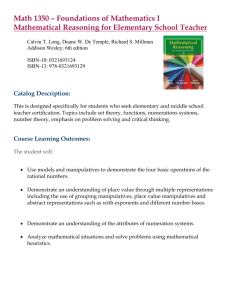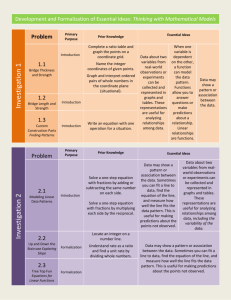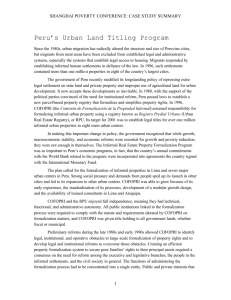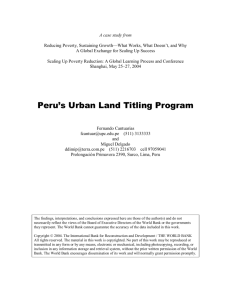Development and Formalization of Essential Ideas: Accentuate the
advertisement
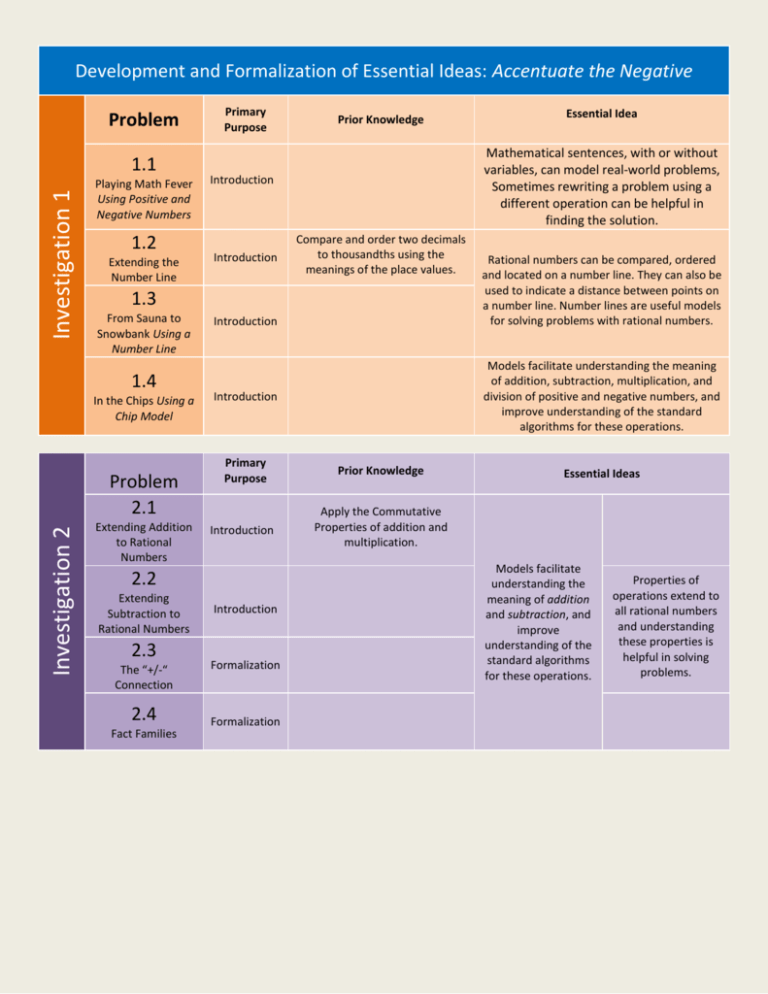
Development and Formalization of Essential Ideas: Accentuate the Negative Problem Investigation 1 1.1 Playing Math Fever Using Positive and Negative Numbers 1.2 Extending the Number Line Prior Knowledge Introduction Introduction From Sauna to Snowbank Using a Number Line 1.4 Problem 2.1 Extending Addition to Rational Numbers Compare and order two decimals to thousandths using the meanings of the place values. Introduction Extending Subtraction to Rational Numbers Primary Purpose Prior Knowledge Introduction Apply the Commutative Properties of addition and multiplication. 2.3 The “+/-“ Connection 2.4 Fact Families Introduction Formalization Formalization Rational numbers can be compared, ordered and located on a number line. They can also be used to indicate a distance between points on a number line. Number lines are useful models for solving problems with rational numbers. Models facilitate understanding the meaning of addition, subtraction, multiplication, and division of positive and negative numbers, and improve understanding of the standard algorithms for these operations. Introduction 2.2 Essential Idea Mathematical sentences, with or without variables, can model real-world problems, Sometimes rewriting a problem using a different operation can be helpful in finding the solution. 1.3 In the Chips Using a Chip Model Investigation 2 Primary Purpose Essential Ideas Models facilitate understanding the meaning of addition and subtraction, and improve understanding of the standard algorithms for these operations. Properties of operations extend to all rational numbers and understanding these properties is helpful in solving problems. Problem Primary Purpose Prior Knowledge 3.1 Multiplication Patterns with Integers Investigation 3 3.2 Multiplication of Rational Numbers Mathematical sentences, with or without variables, can model real-world problems. – Multiplication and Division Introduction Formalization Essential Idea Multiply two one-digit decimals. Use models to divide a decimal by a whole number. 3.3 Division of Rational Numbers Interpret a fraction as division of the numerator by the denominator and use a/b = a + b to solve problems. Formalization Use a common denominator less than the product of the unlike denominators to add two fractions. Models facilitate understanding the meaning of multiplication, and division of positive and negative numbers, and improve understanding of the standard algorithms for these operations. Use the product of the unlike denominators as a common denominator to subtract two fractions. 3.4 Playing the Integer Product Game Investigation 4 Problem 4.1 Order of Operations 4.2 The Distributive Property 4.3 What Operations are Needed? Practice & Application Primary Purpose Prior Knowledge Essential Idea Use the Distributive Property of multiplication over addition to factor. Properties of operations extend to all rational numbers and understanding these properties is helpful in solving problems. Formalization Formalization Order fractions by changing to a common denominator. Formalization Mathematical sentences, with or without variables, can model real-world problems, Sometimes rewriting a problem using a different operation can be helpful in finding the solution.
